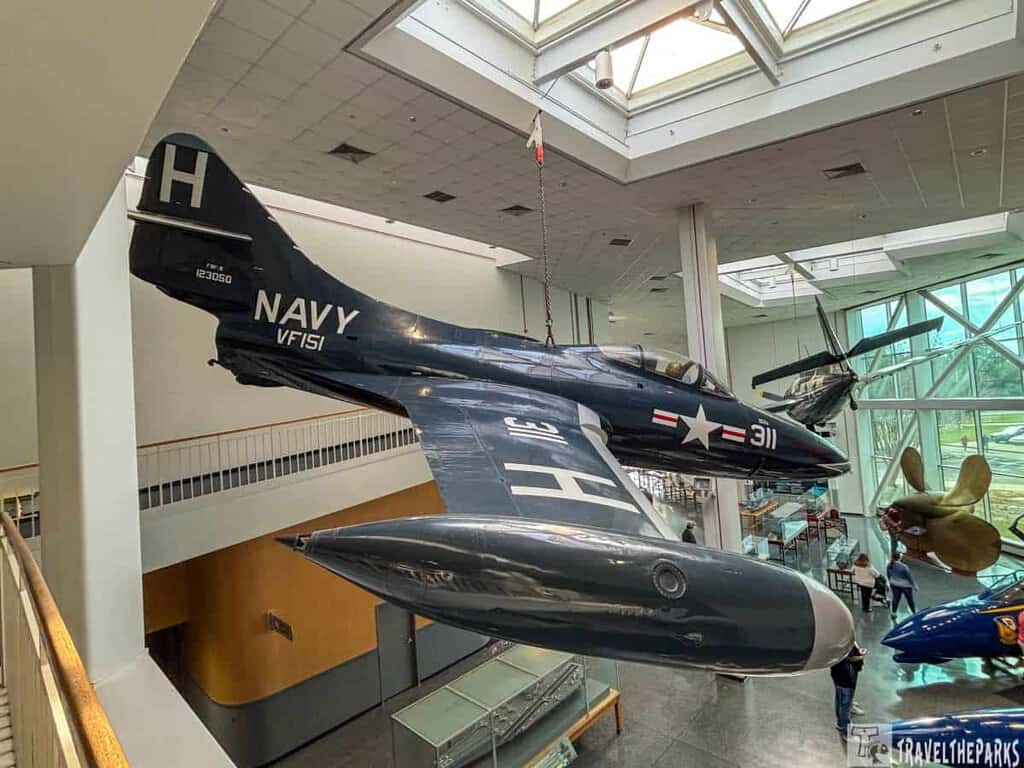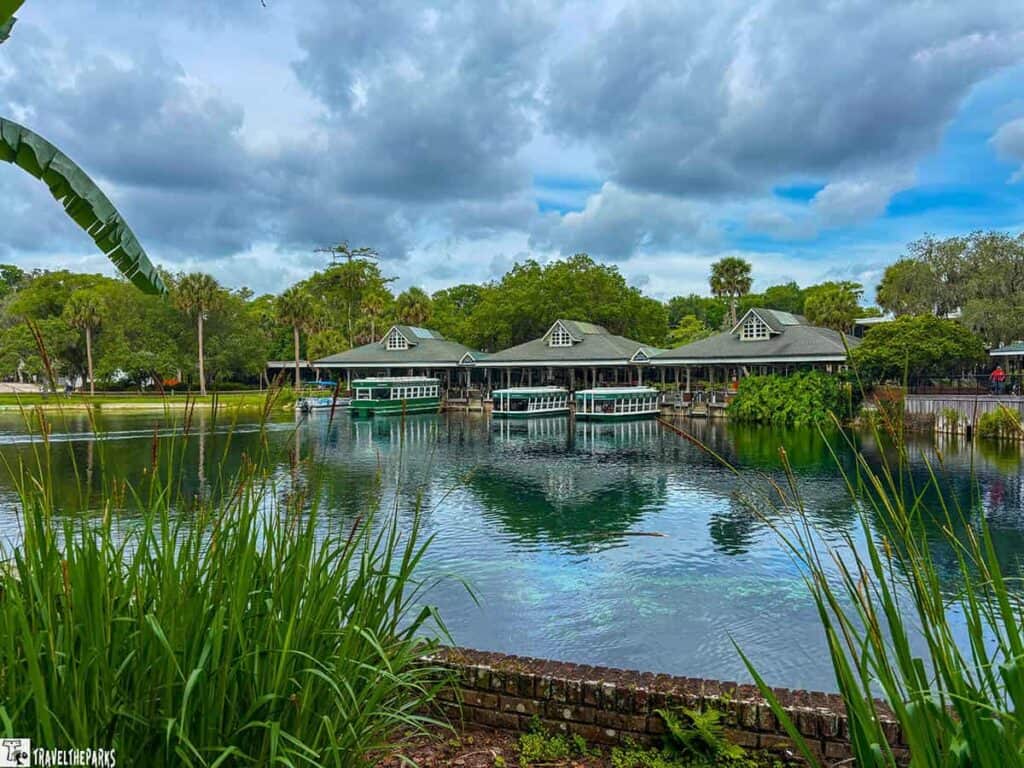Are you thinking about visiting the National Naval Aviation Museum? Planning a day at the National Naval Aviation Museum guarantees an exciting experience. With over 350 aircraft to see, you’ll find plenty to explore. The diverse exhibits showcase the history of aviation in the Navy. Hands-on experiences let us interact with many of the displays, made the learning fun. To get the most out of your visit, we hope this guide that highlights key attractions and tips will help you navigate the museum. Enjoy your journey through aviation history and technology.
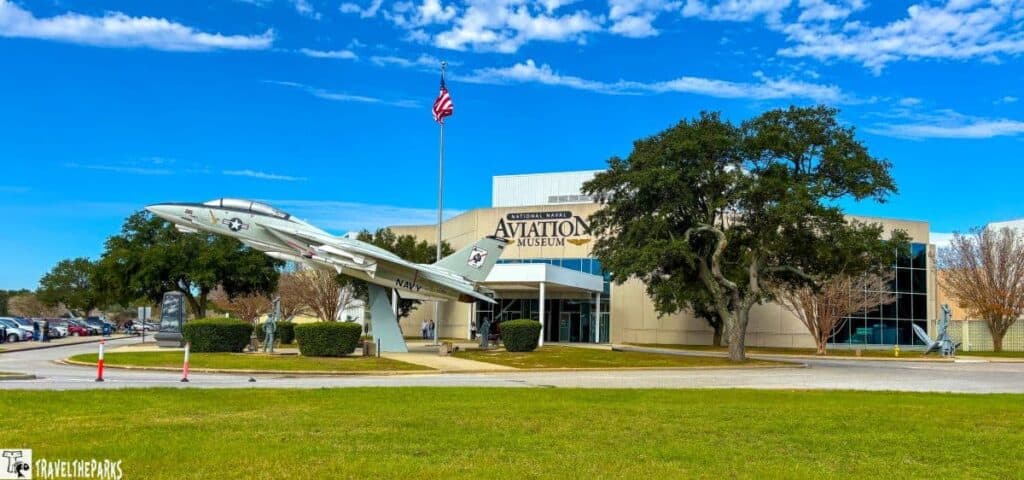
This post may contain affiliate links, meaning if you purchase something through one of these links, we may earn a small commission at no extra cost to you! Read the full disclosure policy here.
This blog post pays tribute to my dear dad. HIs boundless passion for aviation and the Navy was truly captivating. I’m certain he would have relished exploring the museum with us. His countless tales of naval history, iconic aircraft, and the remarkable pilots who flew them inspired me immeasurably. He had a remarkable gift for bringing the past to life through vivid recounts of daring missions and the pioneers of naval aviation. Dad’s love for the Navy and its storied heritage was ever-present, and I can think of no better way to honor his legacy than by sharing the remarkable journey through the National Naval Aviation Museum – a place that would have filled his heart with warmth. I dedicate this blog to him, the quintessential naval aviation enthusiast, whose infectious passion will never be forgotten.
Table of Contents
Important to Know When Planning You Visit the National Naval Aviation Museum
- Location: The National Naval Aviation Museum is at 1750 Radford Boulevard on board Naval Air Station Pensacola, Florida
- Operating Hours: The museum is open from 9:00 AM to 4:00 PM daily, except for Thanksgiving, Christmas, and New Year’s Day. Allow at least 2-3 hours to explore the museum, but you can easily spend a full day if you want to see everything. (see official website for updates/changes)
- Entrance Fees: Both museum admission and parking are FREE. Tickets for MaxFlight Simulators and Giant Screen Theater cost extra. Purchase your tickets online in advance to avoid crowds and save time.
- Public access to NAS Pensacola will be available from 9:00 AM–3:00 PM. Visitors must enter via the West Gate only on the south end of Blue Angel Parkway.
- U.S. Citizens 18 years of age and older must show a single government-issued identification card.
- The Cubi Bar Café is only open Tuesday through Sunday from 11:00AM- 2:00PM.
- Yes, free daily guided tours are available, led by expert volunteer docents. Many of these docents are military veterans. Tours start at the main information desk and are offered at 9:30 AM, 11:00 AM, and 1:00 PM.
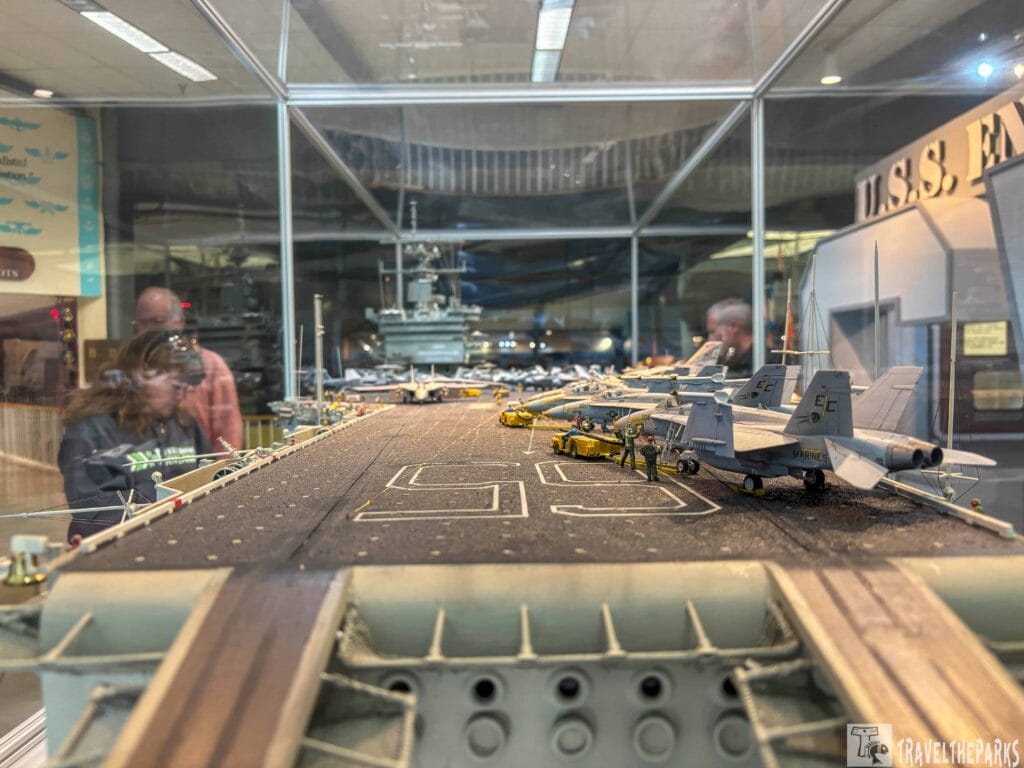
Arrive Early for a Full Day of Exploration at the National Naval Aviation Museum
Get there early to enjoy your time at the National Naval Aviation Museum. This excellent museum has over 150 restored airplanes, interactive exhibits and interesting displays that showcase the history of naval aviation. Getting an early start allows you plenty of time to explore important places like the Blue Angels Atrium, the Flight Deck Experience and the extensive collection of historic planes. We wanted to make sure we had enough time to look around since there was a lot to see. Getting there early allowed us to avoid the crowds, giving us more time to check out each area at our own speed. We used the museum map in the order it suggested making the most of our trip.
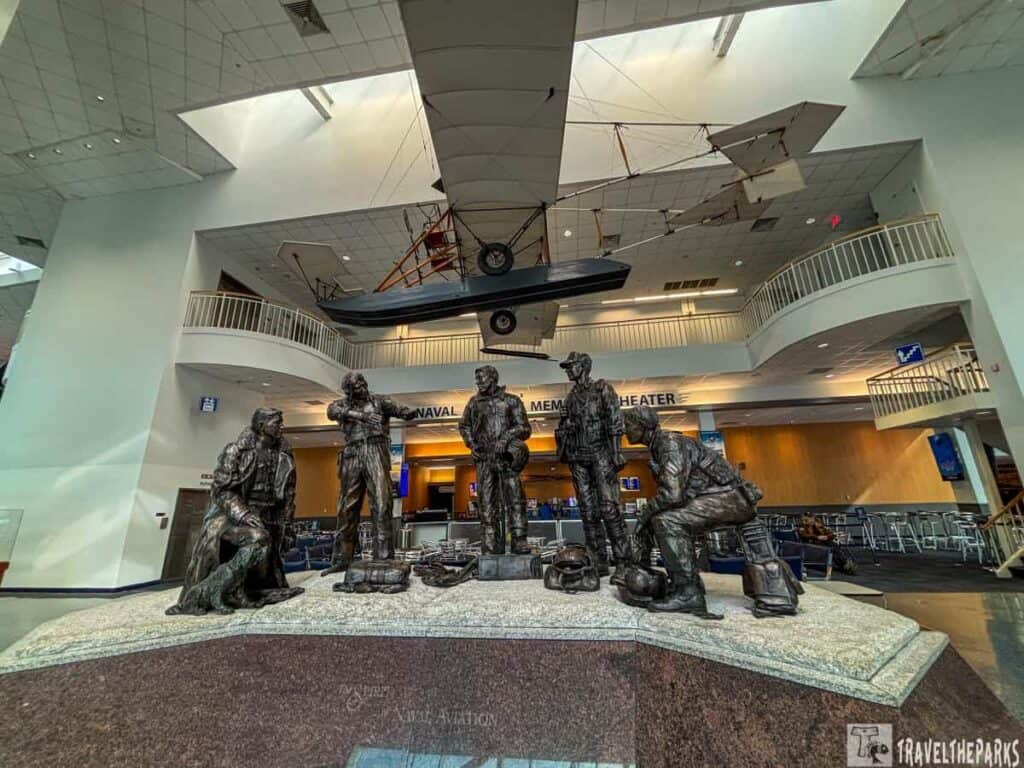
The museum’s quarterdeck entrance, named for ships’ ceremonial arrival and departure points, is where the museum welcomes visitors. This is the area that introduces one into the realm of rich Naval Aviation history. Immediately upon entering the Great Hall (Quarterdeck) of the museum, we encountered a magnificent sculpture; the monument entitled Spirit of Naval Aviation. It features five Naval Aviators from different eras standing around a World War II veteran as he describes a thrilling air battle. Overhead, there is the A-1 Triad replica constructed using the same materials as the original A-1, including an original Curtiss 75 HP V-8 engine.
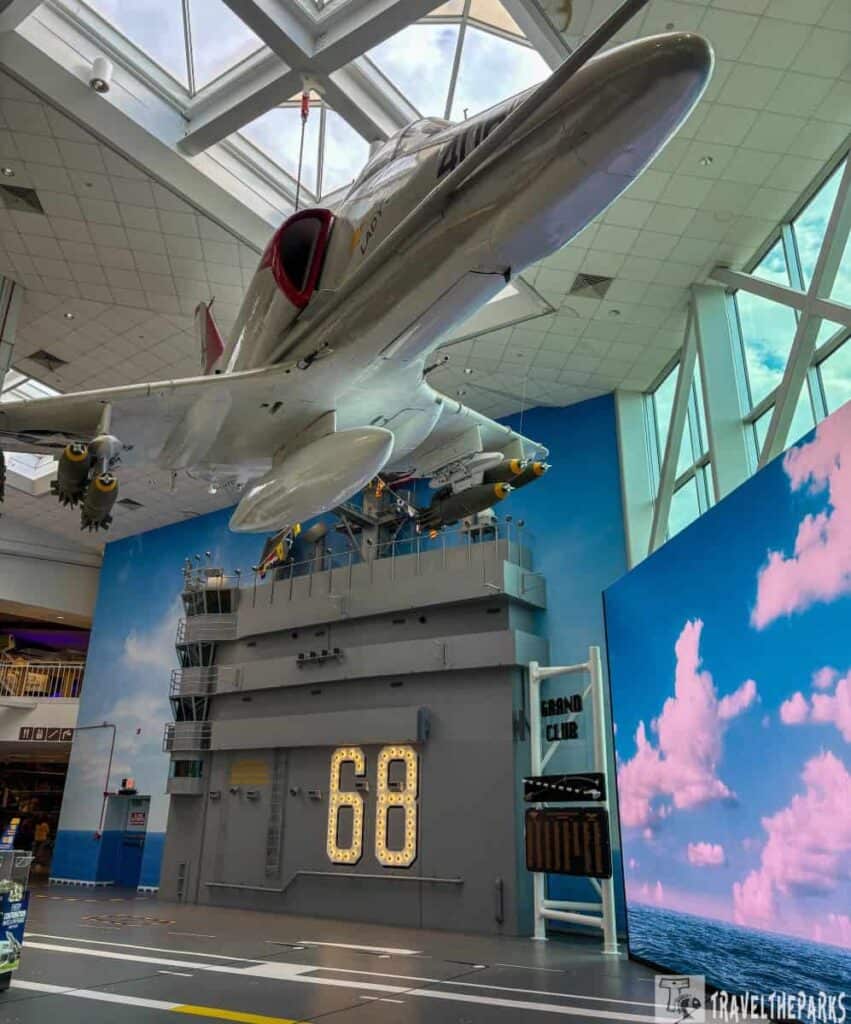
Grab a Map and Plan Your Route: Dive into the Flight Deck Experience
The sheer size of the National Naval Aviation Museum easily causes visitors to miss things if they get caught up in the excitement. Take a map from the very entrance or print out a map downloaded from the official museum’s web pages. Walking through the USS Nimitz exhibit, it features a one-quarter scale flight deck. The Flight Deck Experience is an immersive exhibit, where we stepped onto a mock-up of an aircraft carrier deck, complete with sounds and action. It that makes you feel like you’re in the middle of a live naval operation with a giant screen display F/A-18 Super Hornets launching and landing. For me, it was super cool to watch. It was almost like being there.
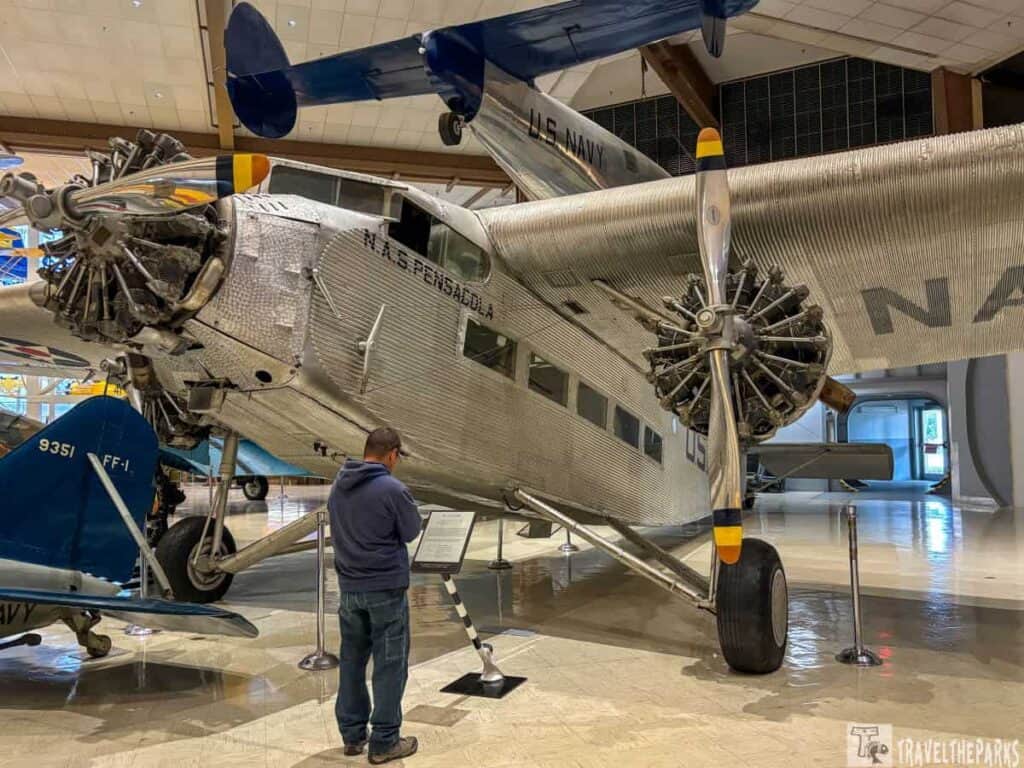
Take Your Time with the Aircraft Displays: Soak in the Stories Behind the Planes
With more than 350 aircraft on display, it’s daunting to decide just where to start. The museum is home to some of the most iconic aircraft in history, from WWII fighters to cutting-edge jets. Take your time to explore the many planes on display, but don’t forget to look up! Many are even suspended from the ceiling to give an amazing perspective on the size and design of these incredible machines. Here we cover just a few of the top exhibits that will truly leave you in awe.
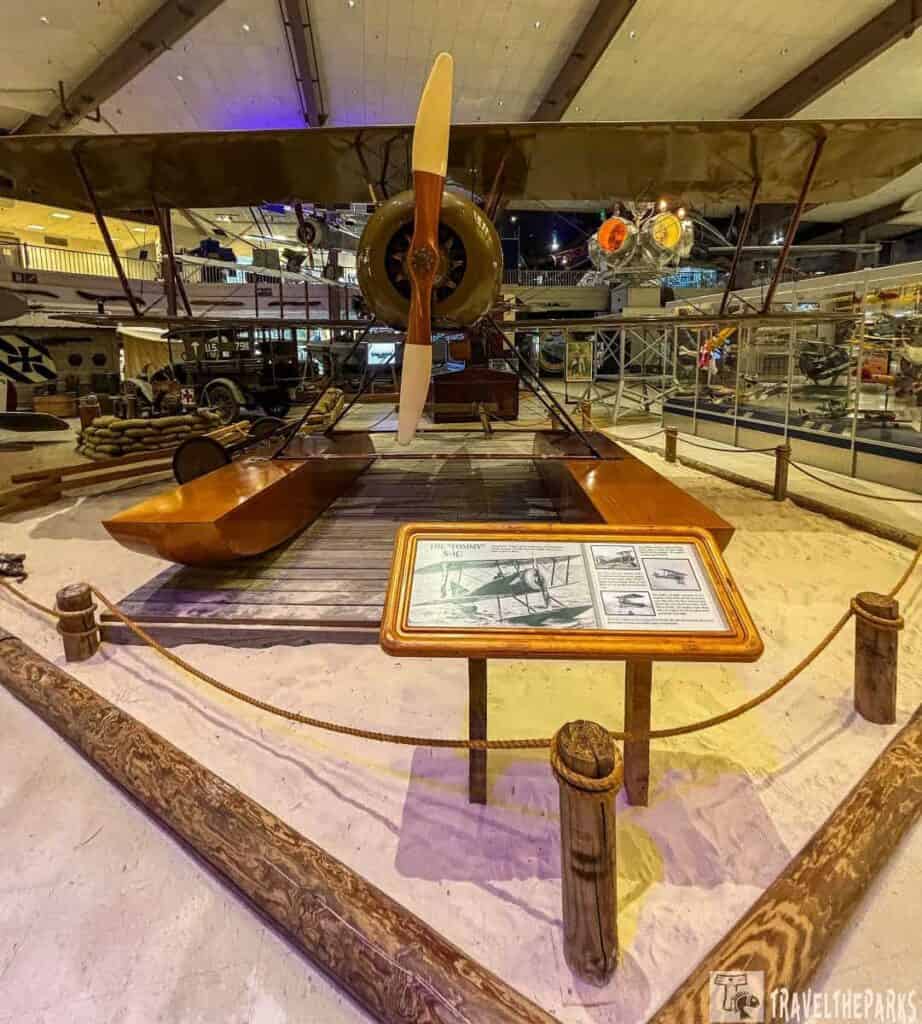
Getting Started at the Dawn of Naval Aviation: The Birth of a New Era
A fine place to begin this exhibit gives a captivating view of the roots of naval aviation. This interactive exhibit chronicles the pivotal moments that transformed flight into a critical component of naval operations, honoring pioneering pilots who helped establish this new form of warfare.
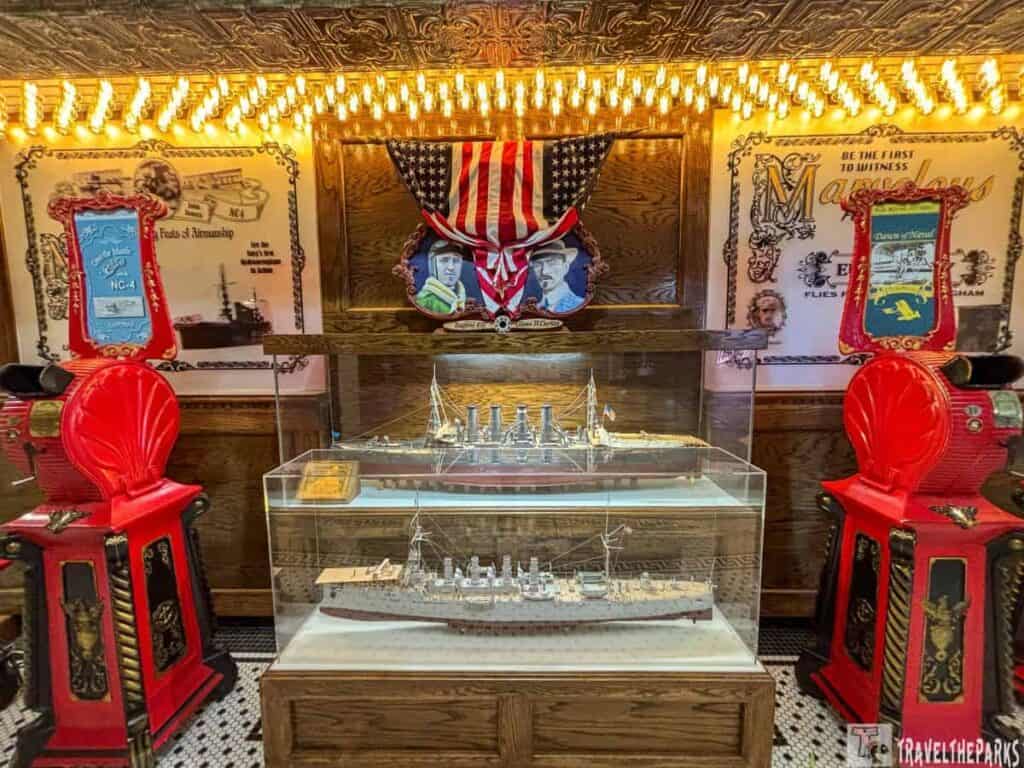
Here, we learned about the evolution of aviation at sea-from its humble beginnings to a powerhouse both as a military strategy and a technological force. The exhibit showcases some of the first aircraft designed for carrier operations, such as the Curtiss NC-4 and the Vought VE-7, which were instrumental in proving that aircraft could not only operate from ships but also become key players in combat.

Naval Aviation in the Great War: A Look Back at WWI’s Aerial Innovations
This display showcases World War I. The first global conflict that saw aviation enter the battlefield with prominence, it used aircraft for reconnaissance, bombing, and daring dogfights in the skies. It was still largely in its infancy by the war’s end, but aviation was fast becoming an indispensable element in military operations.
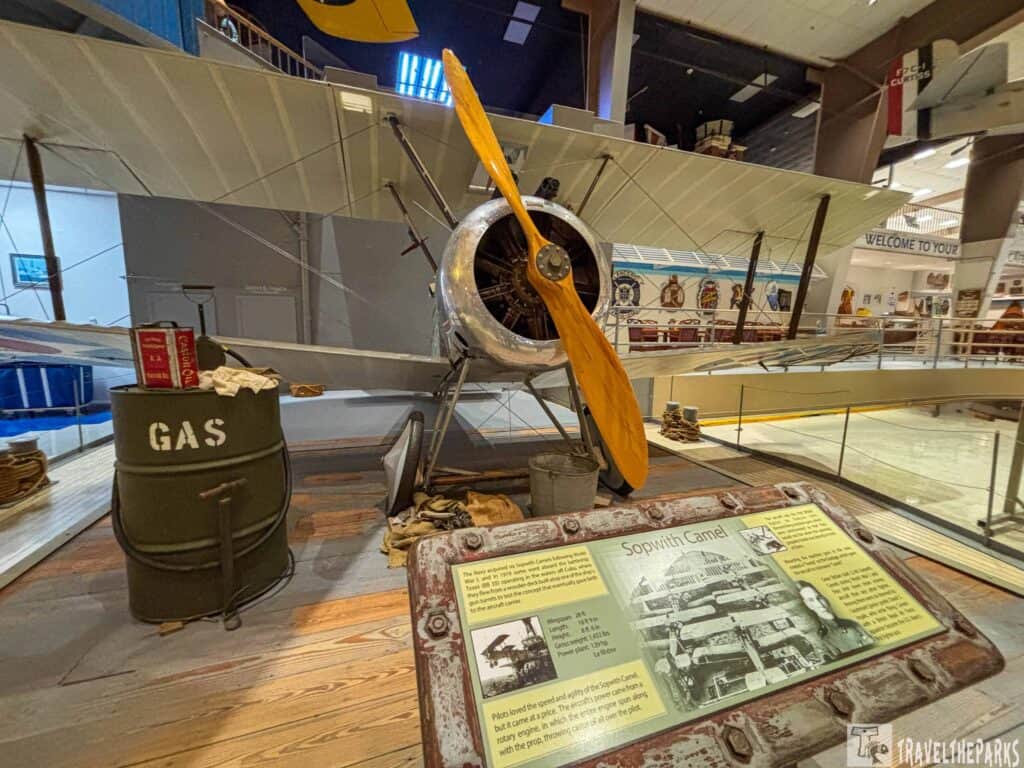
For the United States Navy, it was a proving ground for the early generation of naval aircraft. The Naval Aviation in the Great War dioramas represents the hardship and success experienced by this pioneer age of flying and helps interpret just how these Navy aviation units paved the way to achieve the mighty forces they are today.
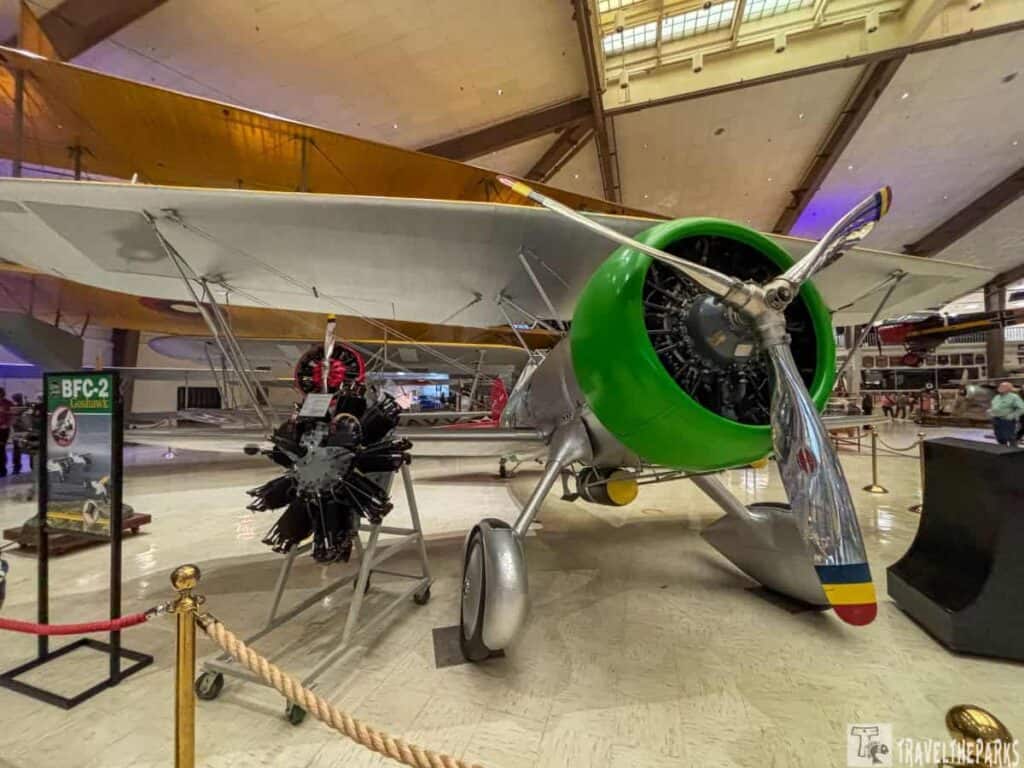
The Divebombing Curtiss BFC-2 Goshawk
The BFC-2 was a significant transitional aircraft in the evolution of Navy planes during the war years. Featuring retractable landing gear, a partial canopy, a large powerful engine, and dual fighter-bomber capabilities, the Goshawk represented several key innovations. Though produced in limited numbers, only 27 aircraft, the model was active from 1933 to 1938. Museum workers painstakingly reconstructed the example on display at the National Naval Aviation Museum from the few remaining parts of the original production run.

Flying Boat: Curtiss NC-4
The Curtiss NC-4 is one of the most impressive aircraft we saw today. It’s an immense flying boat built in 1917 by the Curtiss Aeroplane and Motor Company. It was famous as the first aircraft to make a transatlantic flight, although it did this in stages. Glenn Curtiss designed the NC-4, featuring a biplane with a 100-foot wingspan, 52 feet in length, powered by four Liberty engines rated at 400 horsepower each. On May 16, 1919, the historic transatlantic flight of NC-4 began from Rockaway, Long Island, New York to Lisbon, Portugal. The trip took 18 days to complete, the NC-4 stopping in Newfoundland, the Azores, and Plymouth, England.
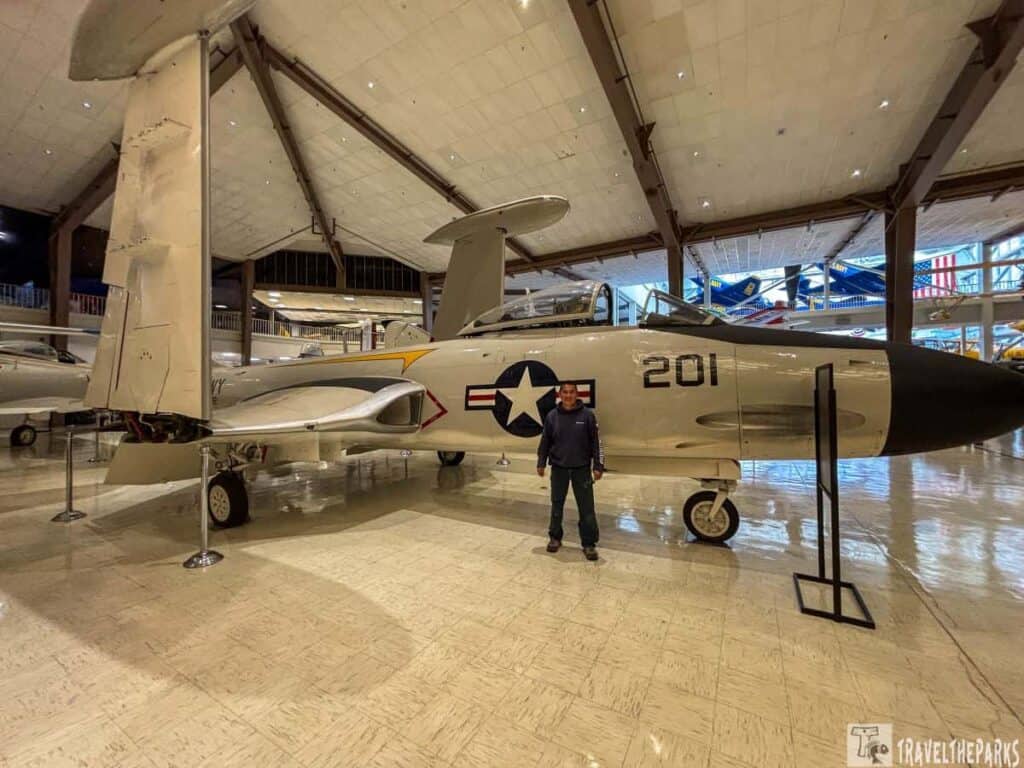
Prowling the Burma Road: Discover the Legendary Flying Tigers Exhibit
We got caught up in a captivating guided tour while walking through the early aircraft section; Here we marveling at the historic planes that laid the foundation for naval aviation. Our guide provided fascinating insights into how each pioneering biplane and iconic 20th-century aircraft contributed to the evolution of modern flight.
The tour then transitioned to the Cold War era, placing us face-to-face with the jets and bombers that defined that tumultuous period. The advancements in technology during this time were mind-blowing.
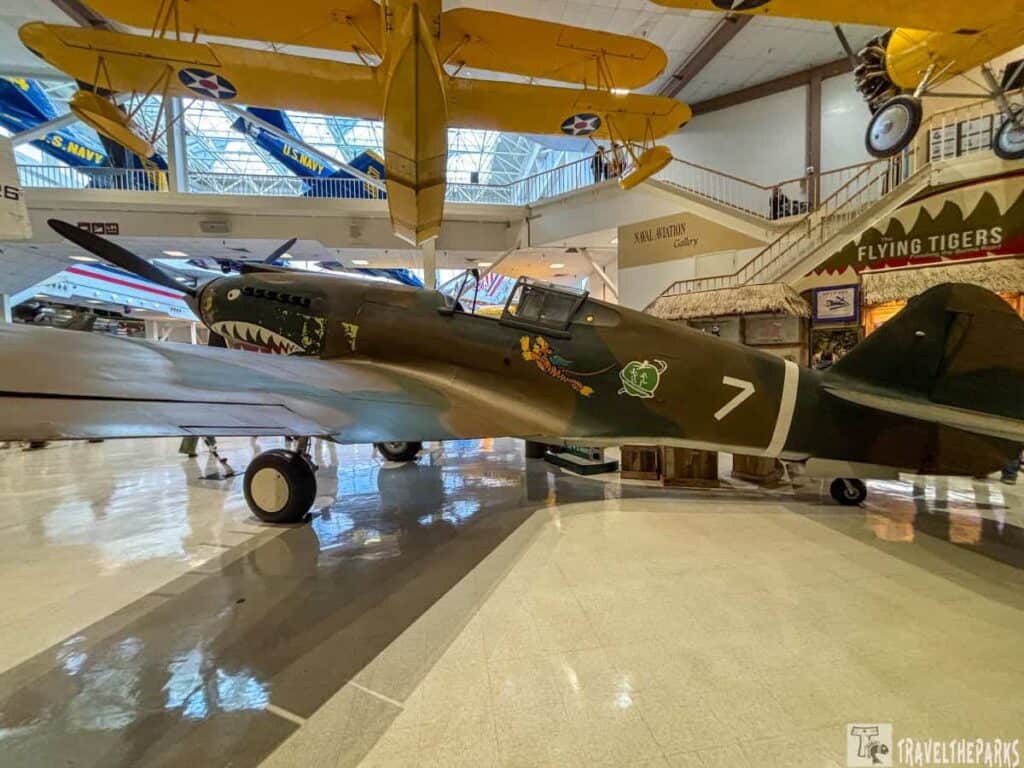
The “Prowling the Burma Road: The Flying Tigers” exhibition is a must for any person who loves aviation history, military history, or simply grand stories about courage and sacrifice. This exhibition brings to life the amazing achievements of the Flying Tigers-a group of American volunteer pilots who fought alongside Chinese forces during World War II. Its mission was to defend China against the constant raids of the Japanese military, often flying hazardous sorties over the treacherous terrain of the Burma Road and other strategic locations.

Getting the Most Out of Your Trip to the National Naval Aviation Museum: Top Exhibits You Can’t Miss
- The museum offers various live shows and movies throughout the day. Check the schedule to see if you can watch one of the museum’s IMAX movies ($). These films frequently explore the history of flying in the navy and the exploration of space. They help you grasp the events and the technology connected to them more clearly.
- Watching the Blue Angels perform live during their practice sessions at Naval Air Station Pensacola is a must-see event. It’s best to check the Naval Air Station Pensacola schedule to confirm specific dates. Unfortunately, we did not get to see them on our visit.
- To enjoy your visit fully, be sure to engage with the interactive exhibits in the museum. Navy Flight Simulators allow you to feel what it’s like to be an actual pilot while flying various kinds of airplanes.
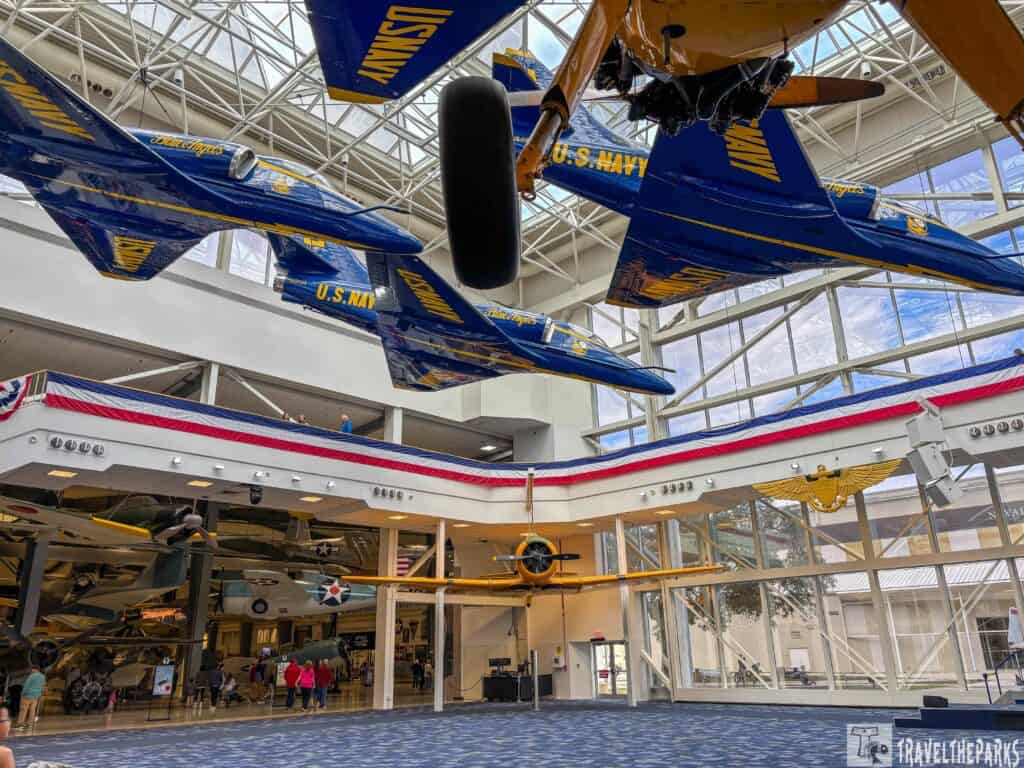
1. The Thrill of Aerial Acrobatics: Explore the Blue Angels Atrium
The atrium’s centerpiece is a full-scale display of the iconic Blue Angels’ F/A-18 Hornet. Its blue and gold squadron colors evoke the excitement and energy of their breathtaking aerobatic performances.
The exhibit chronicles the Blue Angels’ storied history. It traces their journey from early beginnings in 1946 to their current status as one of the world’s most recognizable flight demonstration teams.
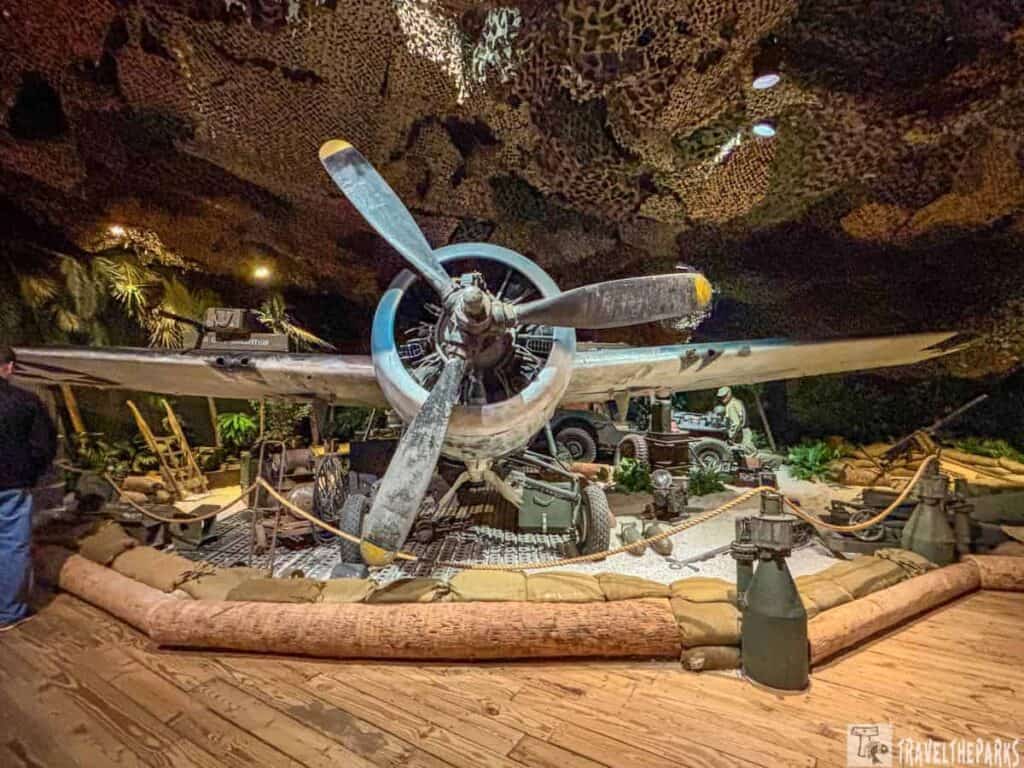
2. South Pacific: Relive the Legends of Naval Aviation in the Pacific Theater
Next, we entered the Pacific Theater exhibit. We felt like we had traveled back to the 1940s. This period saw propeller-driven aircraft taking off from carriers to fight in dogfights. During World War II, some of the most important planes, such as the F4F Wildcat F6F Hellcat and TBM Avenger, were vital in the Pacific arena. Each assisting the U.S. forces changing the course of the war. Ultimately, achieving victory against Japan.
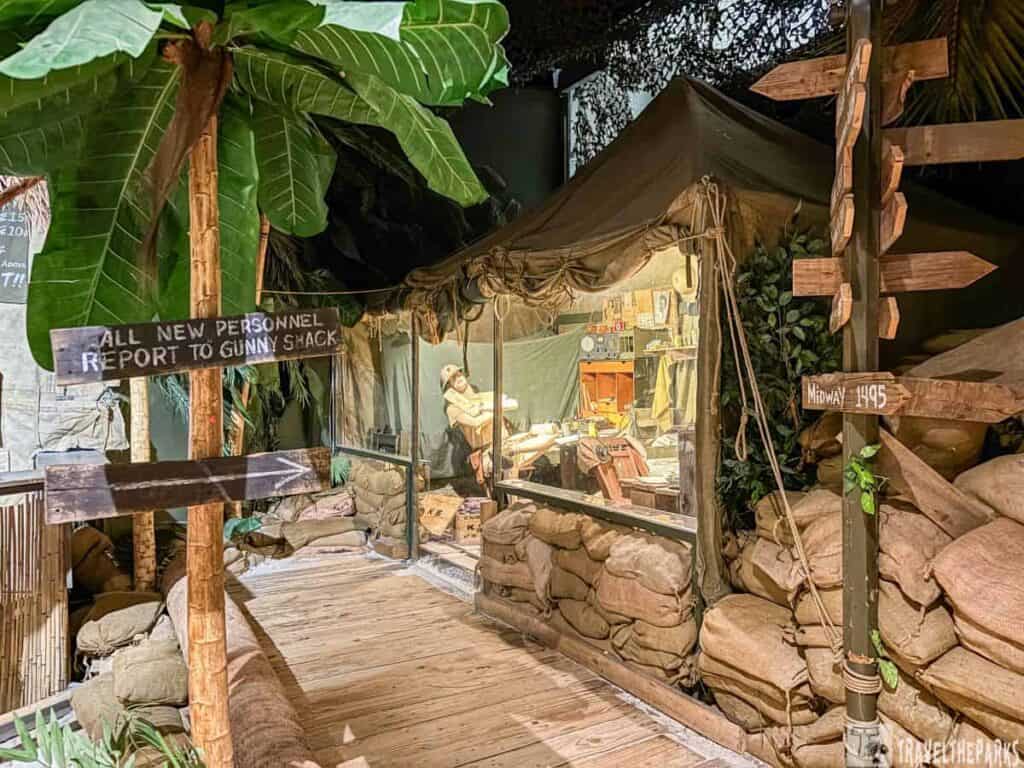
My favorite diorama was the jungle outpost in Guadalcanal. It featured a Wildcat fighter surrounded by palm trees and sandbags bringing to life the tough conditions of the island-hopping battles. You felt transported back in time, fully involved in that important historical moment.
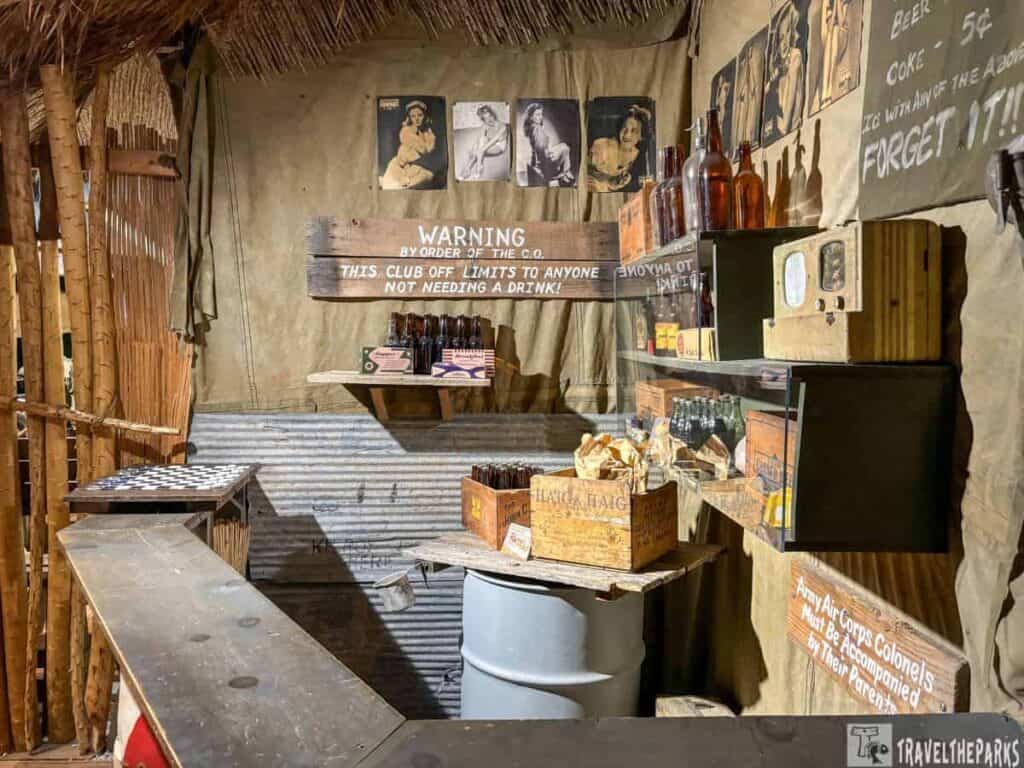
U.S. Homefront Diorama Exhibit at the National Naval Aviation Museum
Wartime homefront life, with its rationing, scrap metal collection, and war bond drives, is vividly depicted in these dioramas. Each showcase the struggles faced by families. This exhibition underscores the contributions and sacrifices of families. It illustrates how individuals of all ages and genders played a vital role in the success of the war effort.
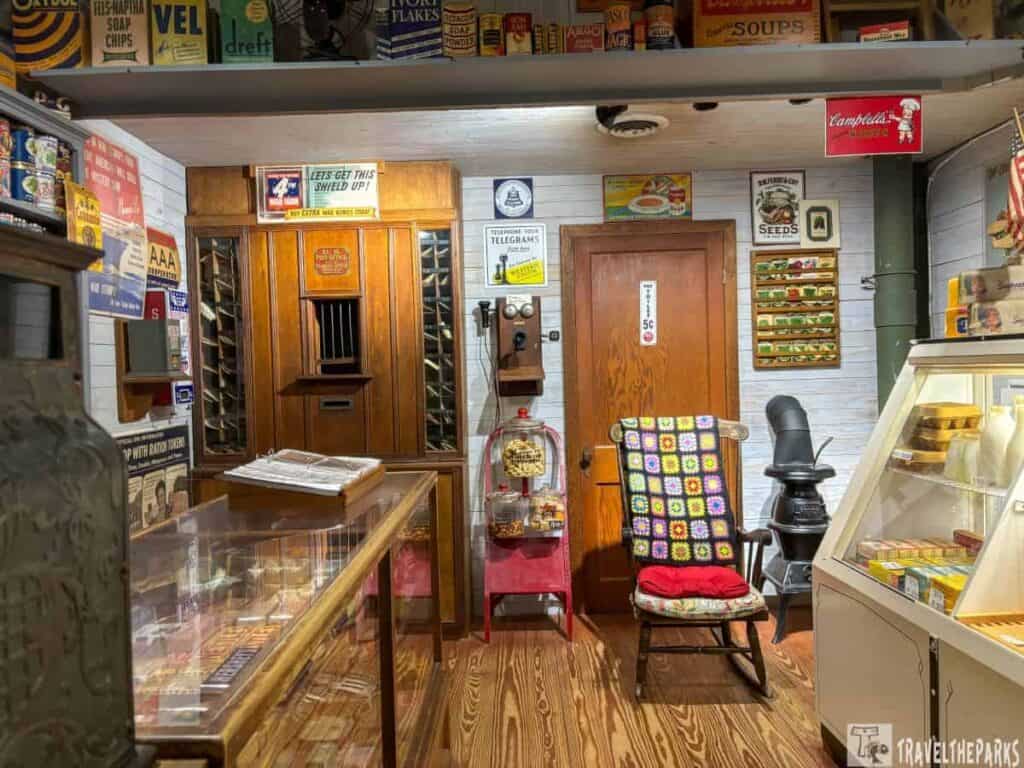
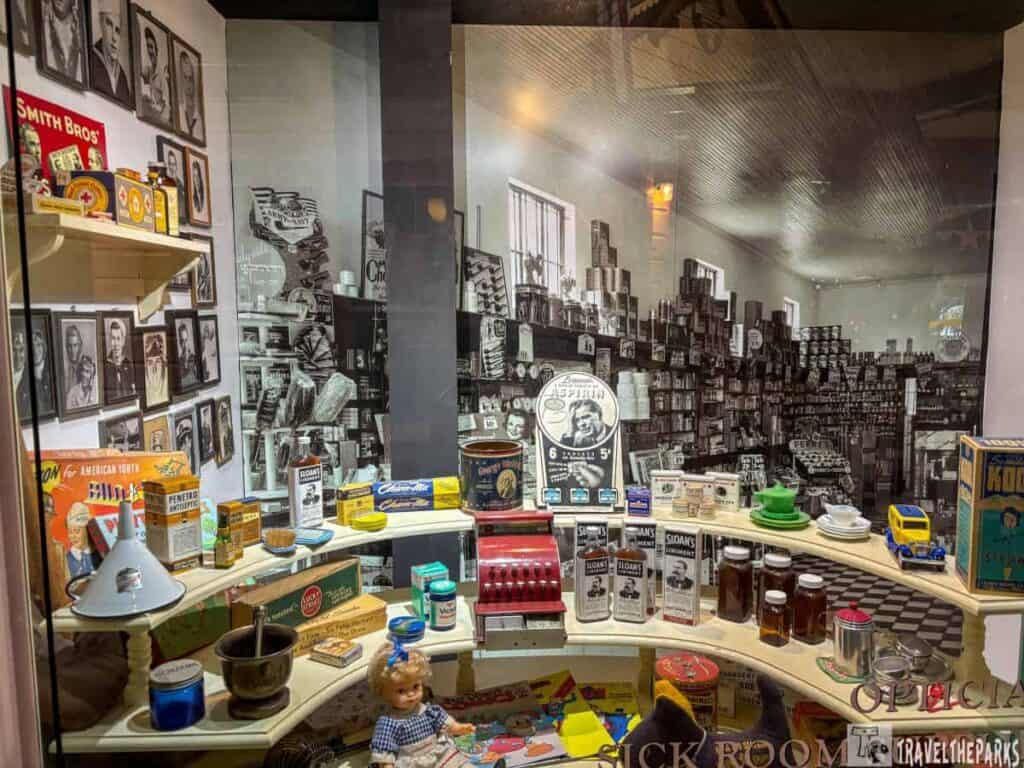
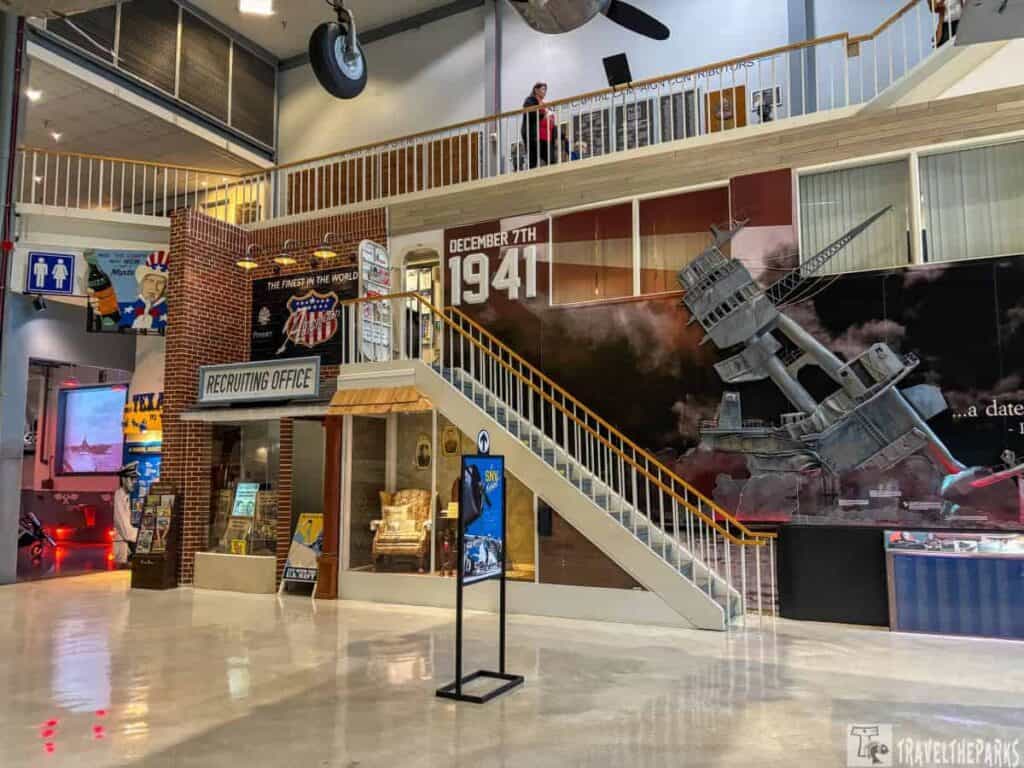
“The Raft”: A Harrowing Tale of Survival in the Pacific During World War II
One of the most poignant exhibits was, “The Raft.” It serves as a powerful reminder of the essential survival instincts that influenced many arduous journeys in the Pacific during World War II. The book by Robert Trumbell tells the actual story of U.S. Navy airman Harold Dixon, Tony Pastula, and Gene Aldrich, who were adrift at sea for 34 days. These survivors clung to a small inflatable life raft after their plane crashed in the Pacific. The survivors battled constant thirst, hunger and the mental strain of looking at the endless ocean. With their smart thinking and firm determination, they could hold on to the sturdy raft which surprisingly held up against the sun, salt, and rough conditions. Even in tough situations, this dramatic tale highlights the incredible human will to survive.
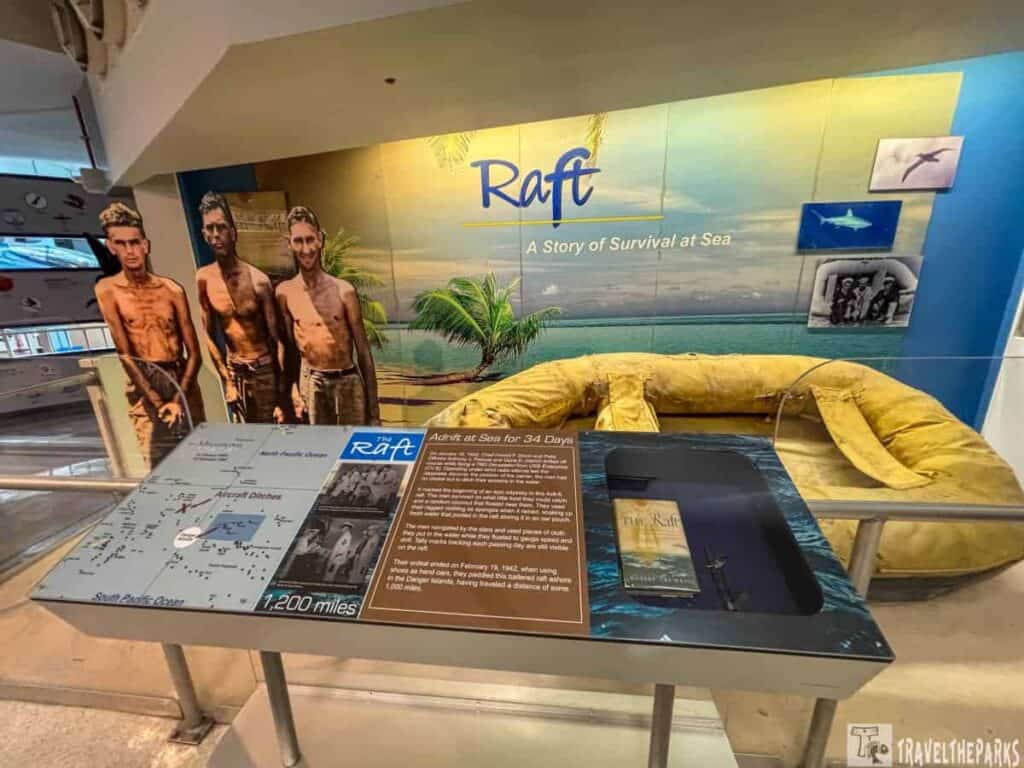
3. The Korean War Exhibit: A Salute to Valor and Aviation Breakthroughs
Another section of the museum is the area focused on the Korean War. Aircraft displays such as the F9F Panther and the F-86 Sabre hang from the ceiling. The museum has interactive panels explaining how these planes were important during the Korean War. We explored how technological advancements in naval aviation played a part in the conflict. Interactive panels detail the logistics and strategy behind naval aviation during the war. They include interviews with Korean War veterans who share their experiences on flying planes and their memories of combat missions.
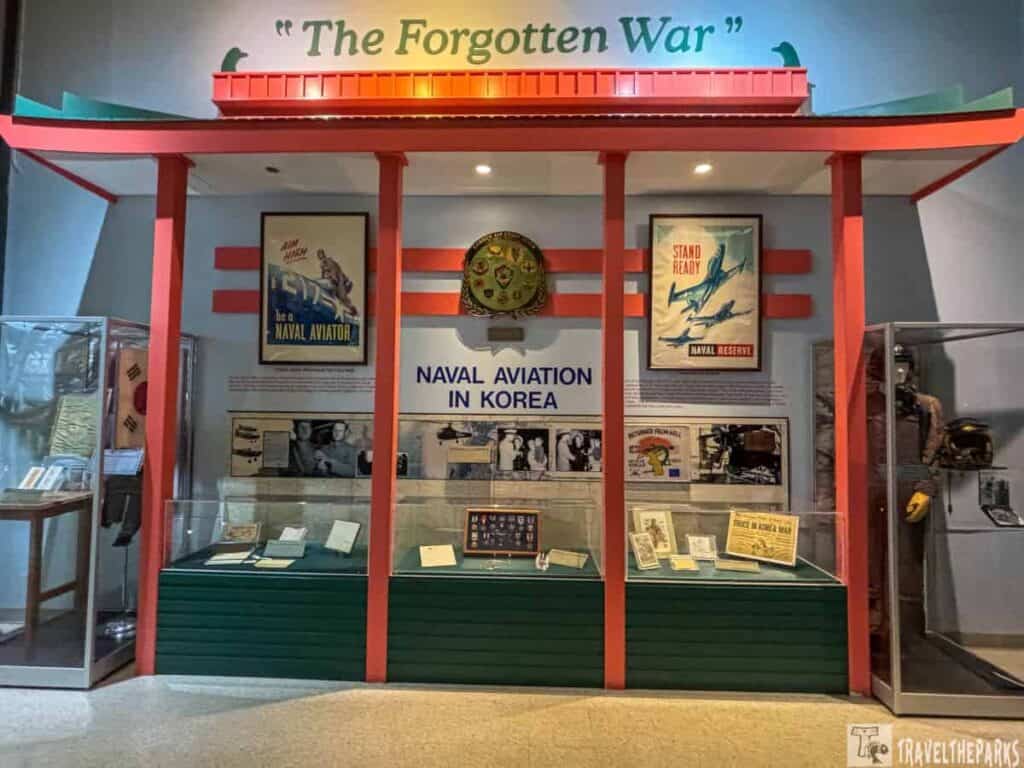
The most poignant display was a model showing the crash of ENS Jesse L. Brown’s F4U-4 Vought Corsair. The plane seems to have crash landed on a snowy mountainside in Korea. You can see some parts of the damaged aircraft. ENS Brown is stuck inside the open cockpit. The fire in the cockpit and his trapped legs prevent his escape from the dangerous situation.
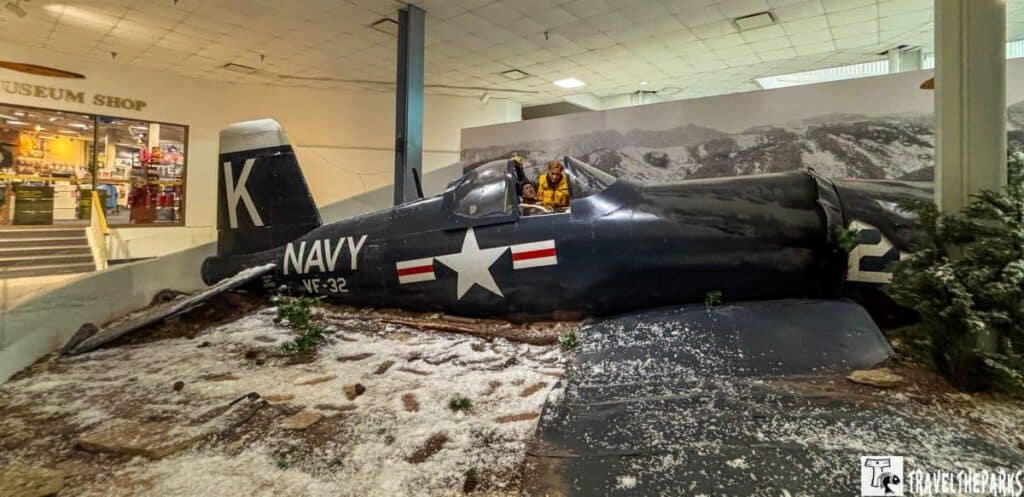
Next to the diorama, a sign briefly tells the story: During a Korean War mission on December 4, 1950, gunfire hit ENS Brown’s plane, resulting in a crash. A brave rescue attempt by fellow squadron member Lieutenant Junior Grade Thomas Hudner Jr. ultimately failed. Hudner did not make the choice to leave Brown easily, but his brave actions won him the Medal of Honor. Brown’s courage and Hudner’s readiness to put everything on the line for a friend serve as enduring examples of sacrifice, friendship and duty.

4. Highlights from Hangar Bay One at the National Naval Aviation Museum
As we walked over to the large Hangar Bay One, we found a great variety of aircraft on display. This large 55,000 square foot warehouse contains many interesting exhibits. You can see the famous Skylab lunar module from the Apollo space missions, moving tributes to American prisoners of war in Southeast Asia and the proud history of Coast Guard aviation. It is easy to lose yourself amidst these powerful relics and memorabilia that evoke a bygone era. Trust us, you’ll want to linger and soak in every fascinating detail this hangar has to offer.
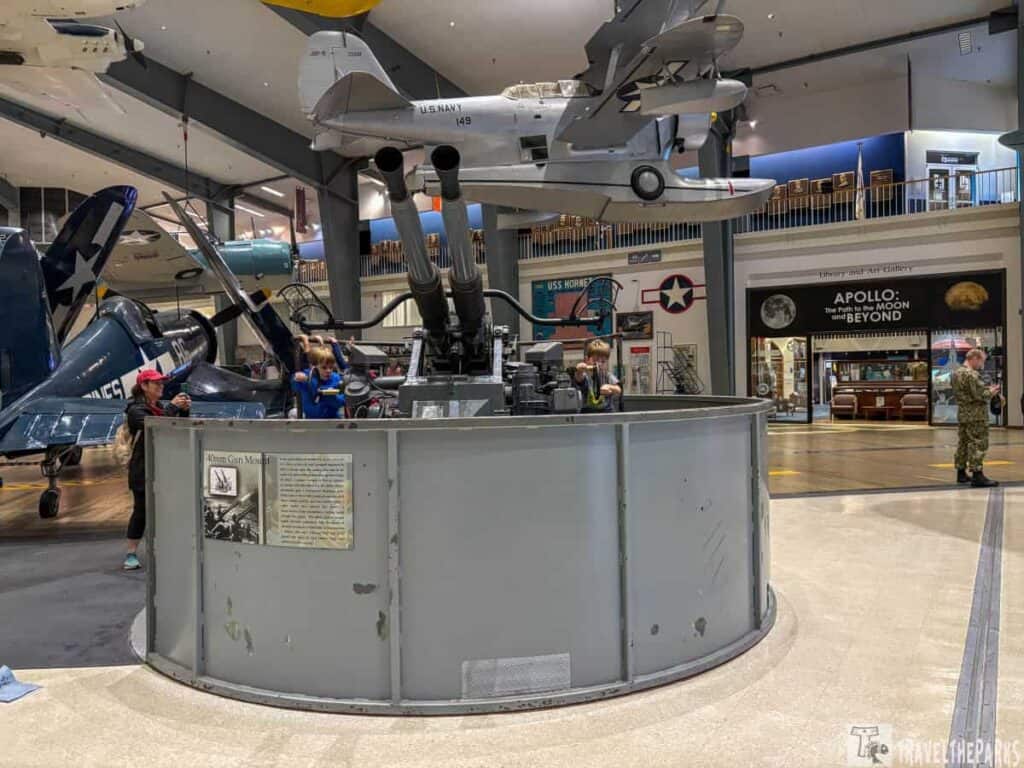
5. Take a Break at the Café and Stop at the Gift Shop: Refuel and Bring Home a Memory
Exploring the museum left us famished, so we headed to the on-site Cubi Bar Café to refuel. This casual eatery serves up classic American fare. It’s the perfect spot to sit, recharge, and discuss our museum adventures. If you want a quick snack, the Naval Aviation Museum Theatre Concession Stand has popcorn, candy, and more.
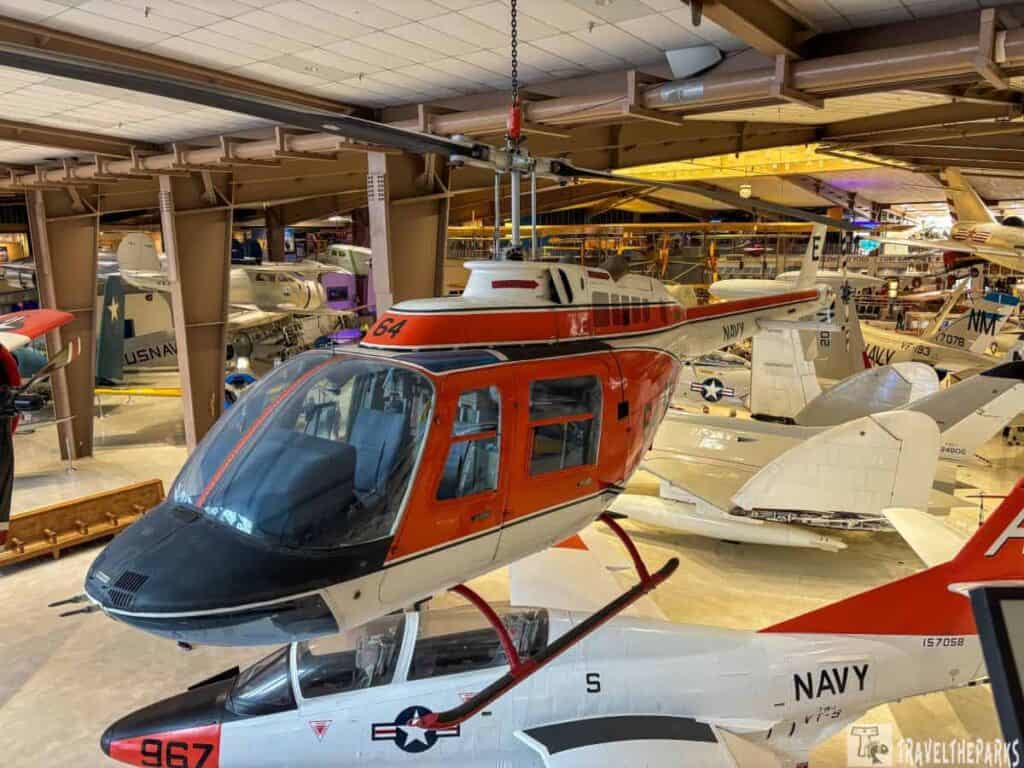
After our tasty break, we went to the museum’s gift shop, which had plenty of items to choose from. Aviation enthusiasts can find a selection of special souvenirs at the Flight Deck. This includes books, clothing, model airplanes, and unique collectibles. The museum has a wide variety of items that make exceptional gifts for others or special mementos for yourself. There’s something for everyone making sure each visitor leaves with a piece that reflects the wonderful experience at our museum.
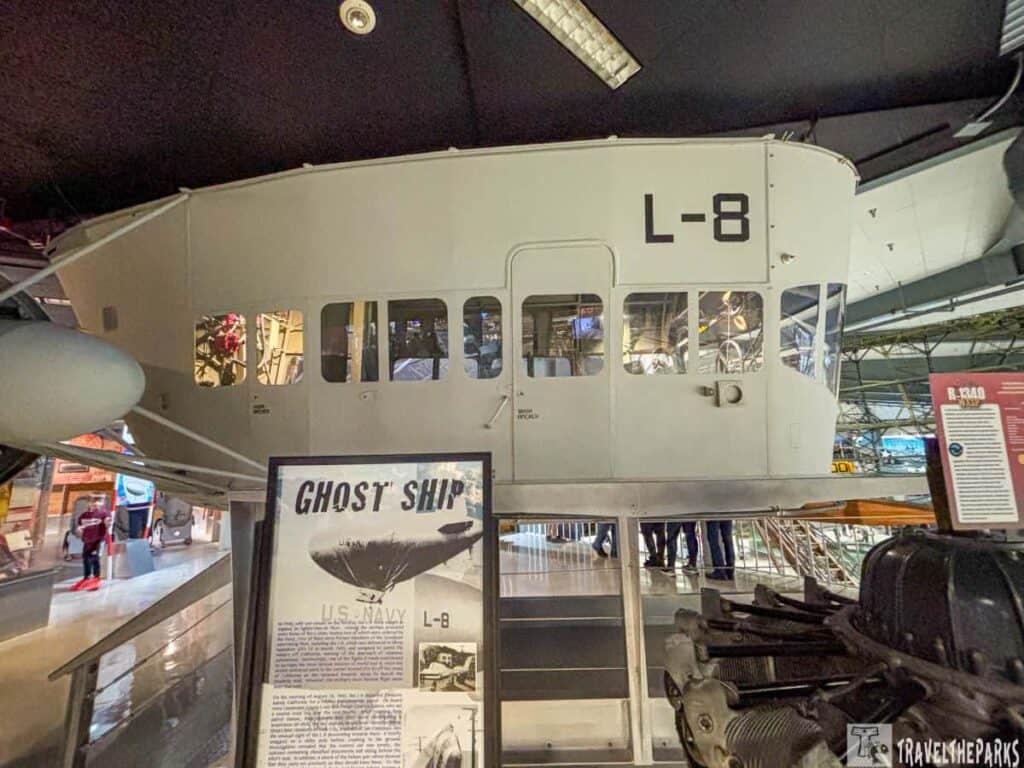
Essential Items to Bring for Your Visit to the National Naval Aviation Museum
When visiting the National Naval Aviation Museum, be sure to wear comfortable shoes for walking, bring a refillable water bottle, and pack a light jacket for potential cool indoor temperatures. If you’re planning to explore outdoor areas or catch a Blue Angels practice, don’t forget sunscreen and a hat. A camera or smartphone is a must for capturing photos, and it’s a good idea to bring a charger or power bank to keep your devices powered. If you’re traveling with kids, consider bringing snacks, a stroller, or small toys for entertainment. Lastly, be prepared to purchase souvenirs with cash or card and bring any event tickets if attending special shows or practices.

Final Thoughts: How to Make the Most of Your Day at the National Naval Aviation Museum
Today’s itinerary highlights include visiting Fort Barrancas, part of the Gulf Islands National Seashore. This site offers a look at military history and stunning coastal views. The Pensacola Lighthouse & Museum nearby provides insights into maritime navigation and local heritage. Both locations are rich in history, providing unique opportunities for exploration and learning. We enjoyed the scenic landscapes while gaining a deeper understanding of the area’s past.
The National Naval Aviation Museum is not just a place to see airplanes; it offers visitors an exciting look into the rich history of naval aviation. As you go through this step-by-step tour, you will develop a greater understanding of the creativity, courage and lasting influence of the pilots who built this proud history. This museum doesn’t just show planes; it pays tribute to the sacrifices and brave efforts of those who helped improve naval aviation.
Have you visited the museum? Share your favorite exhibits or tips in the comments below!

